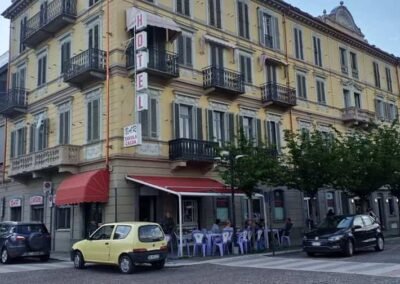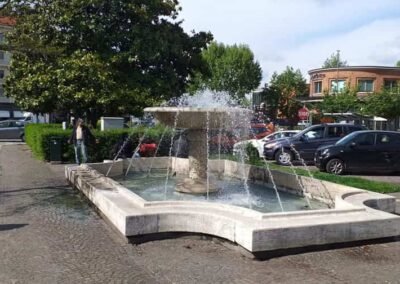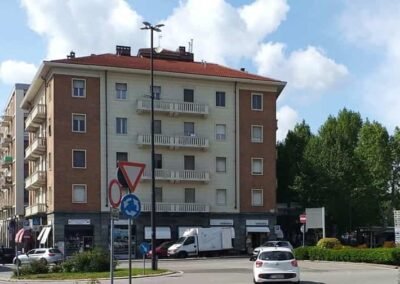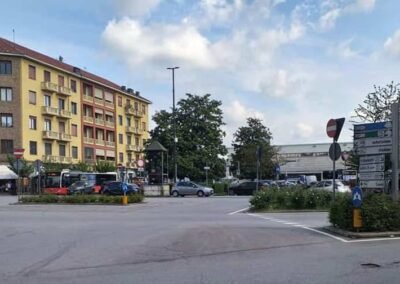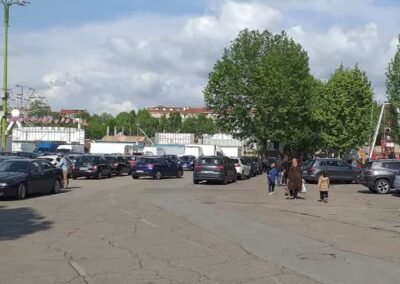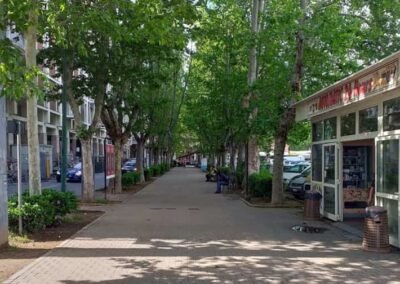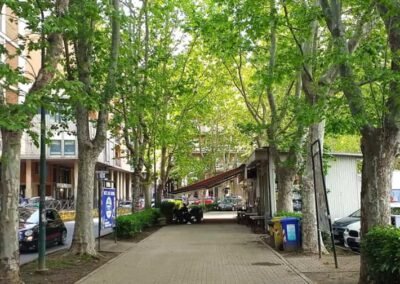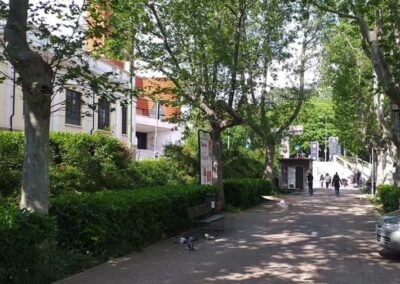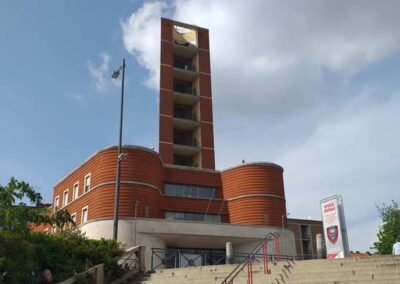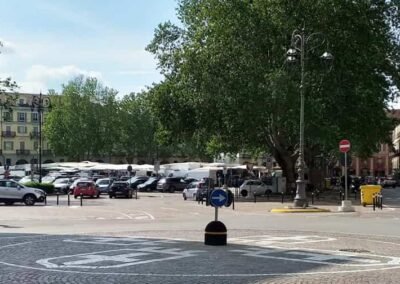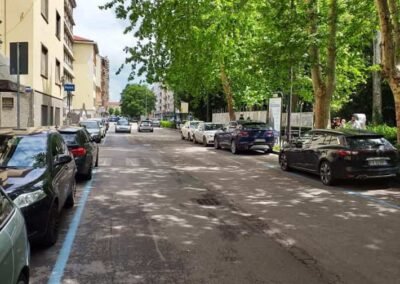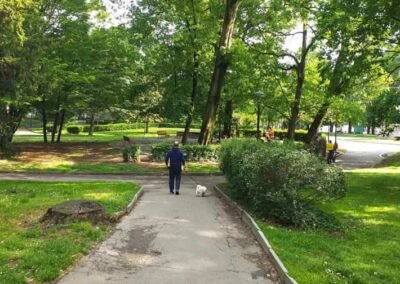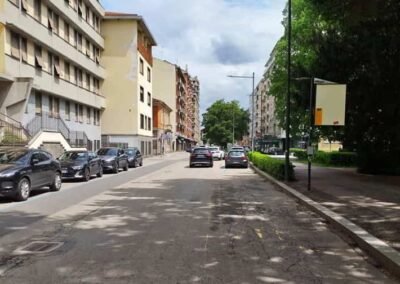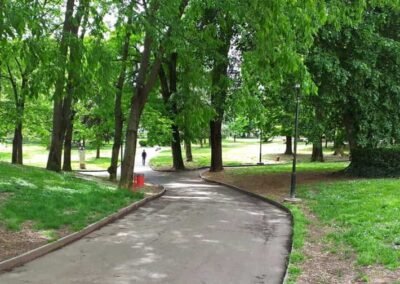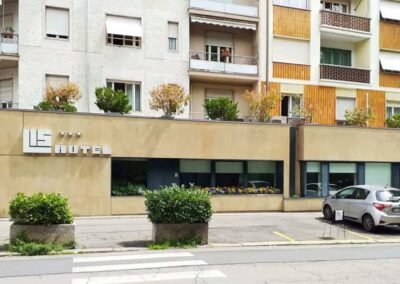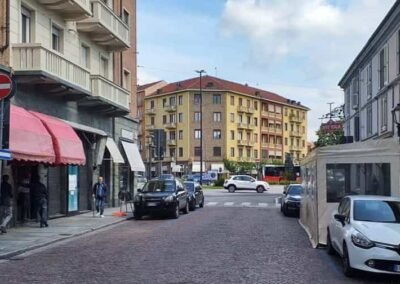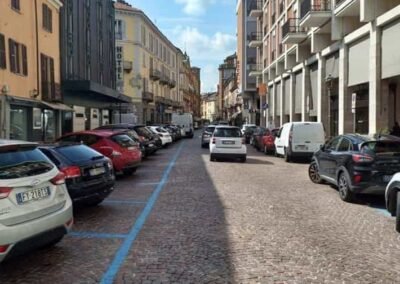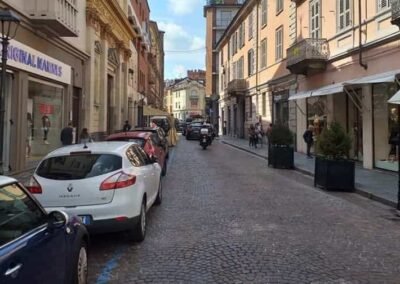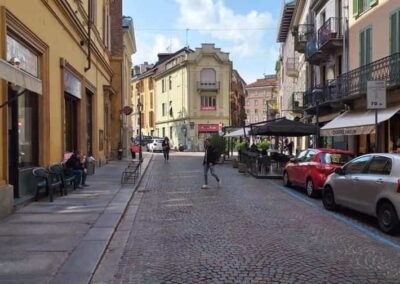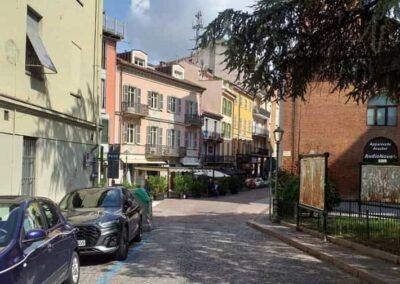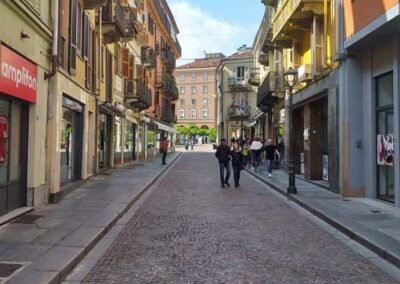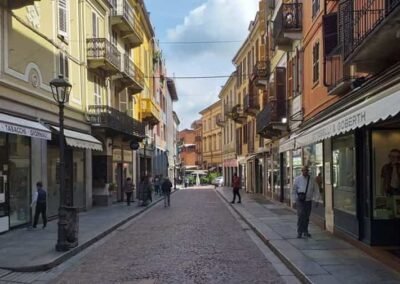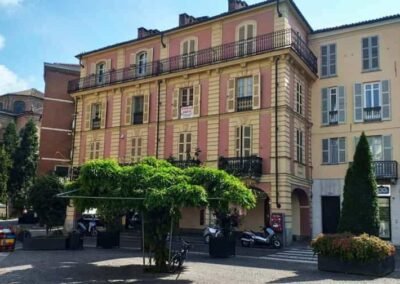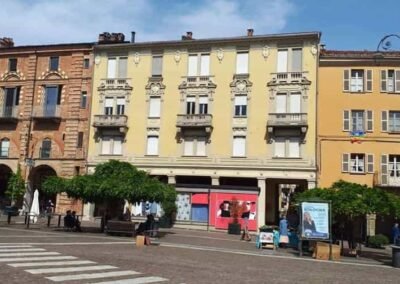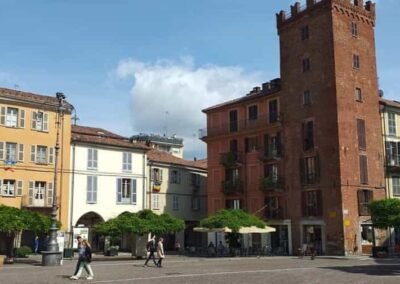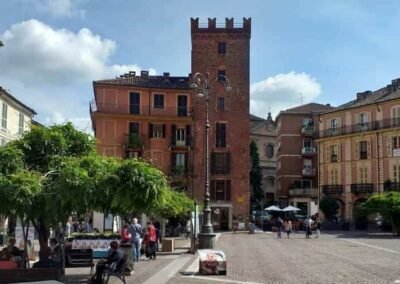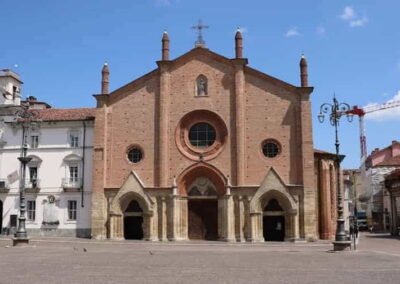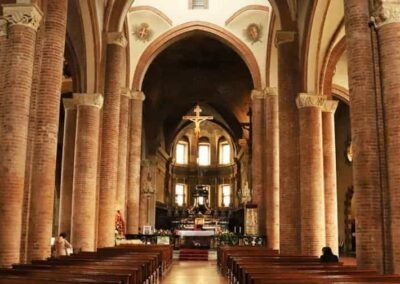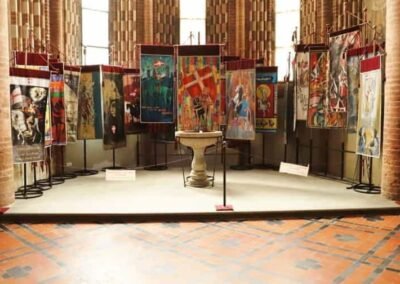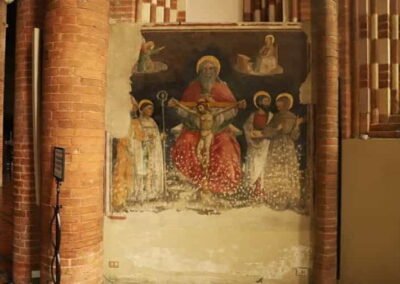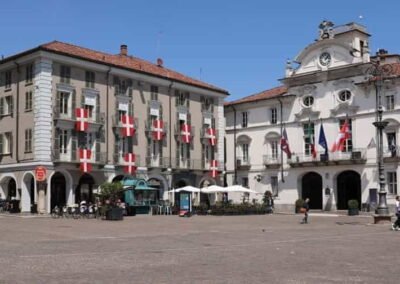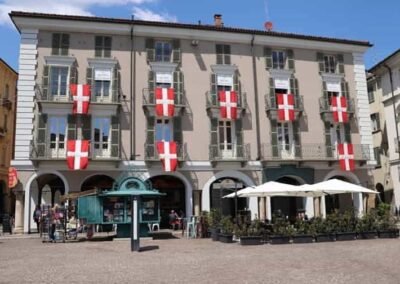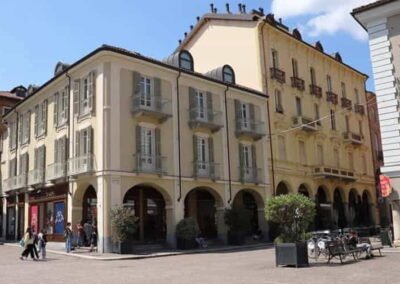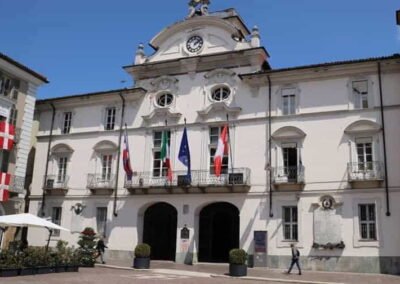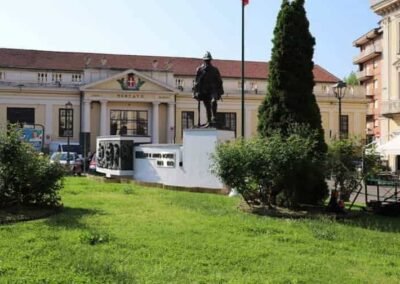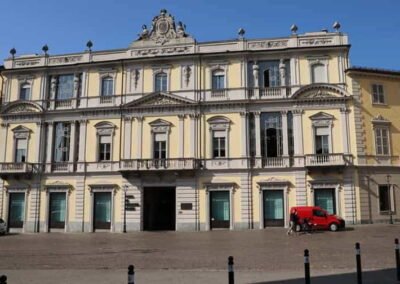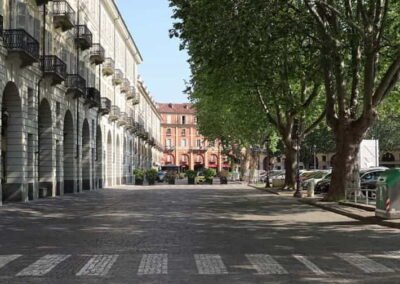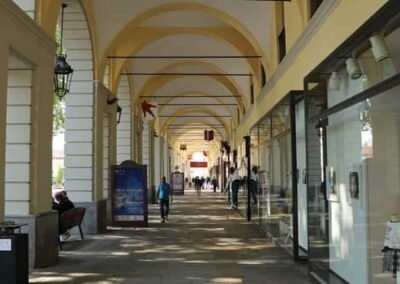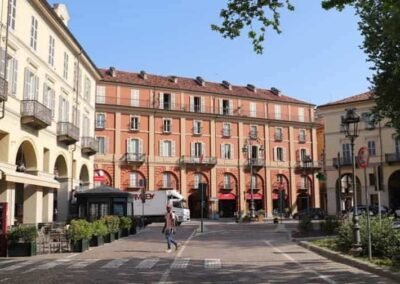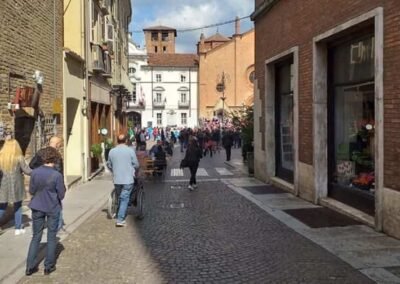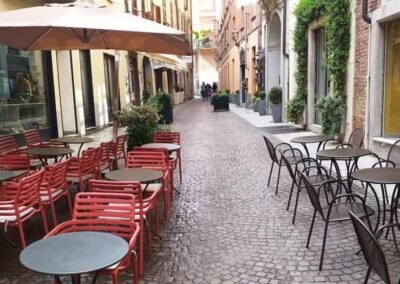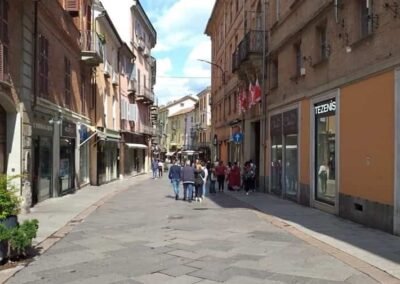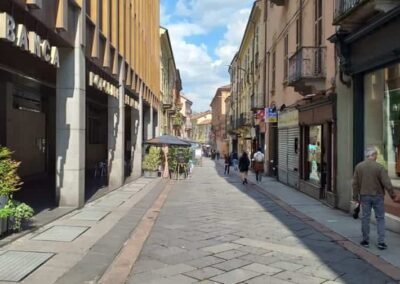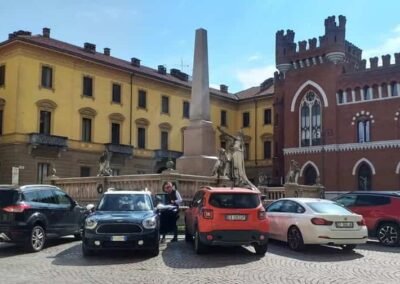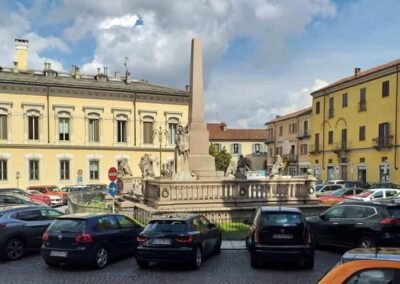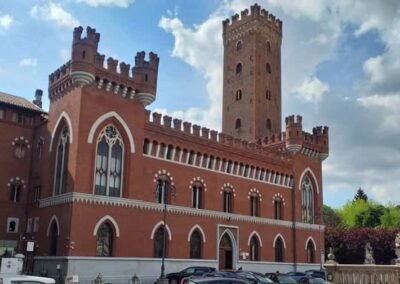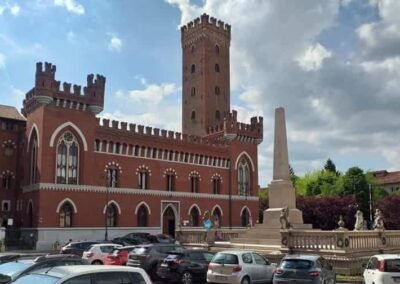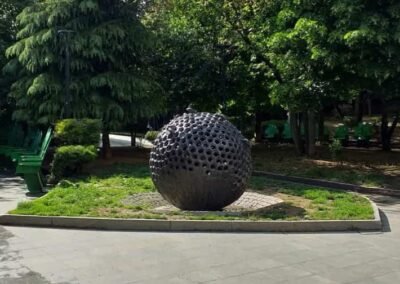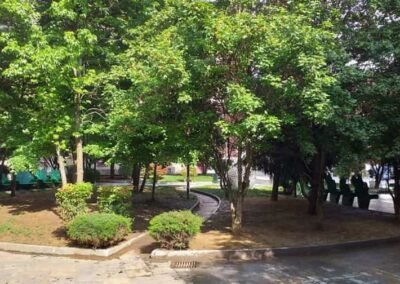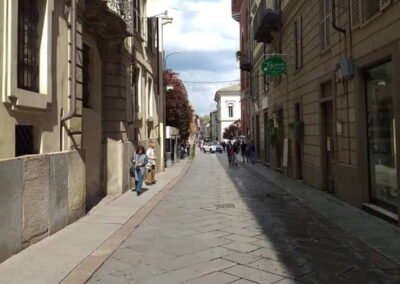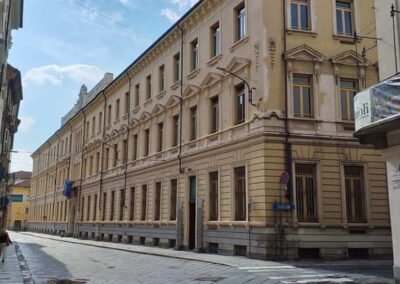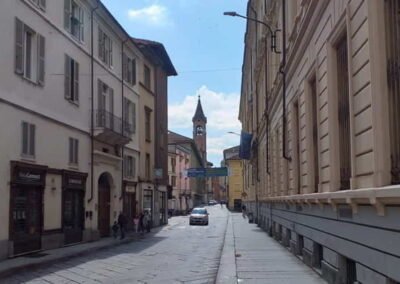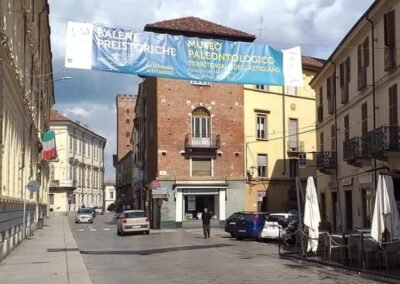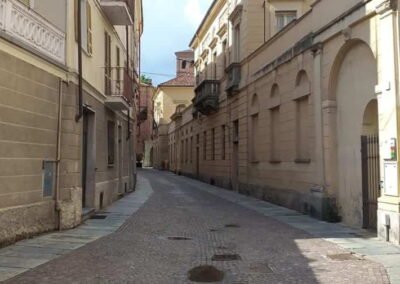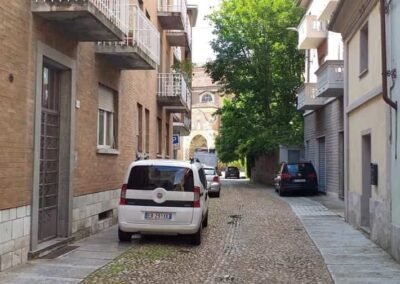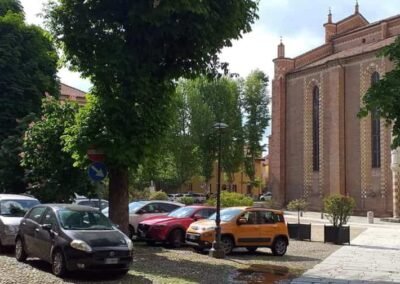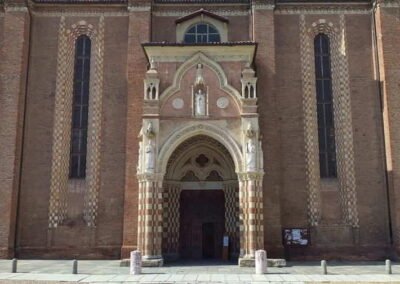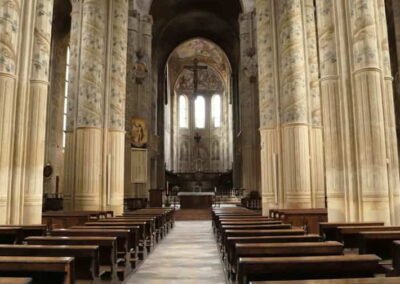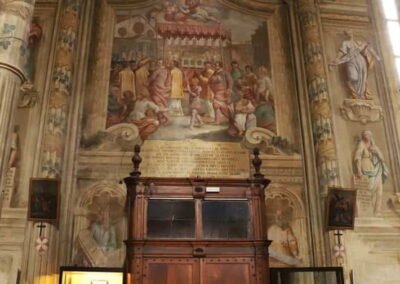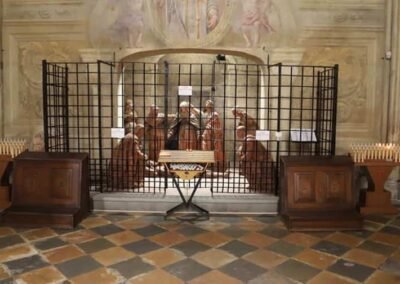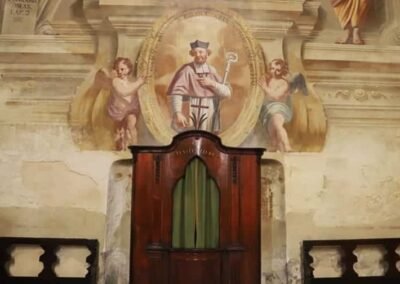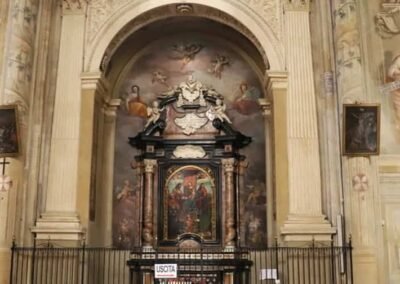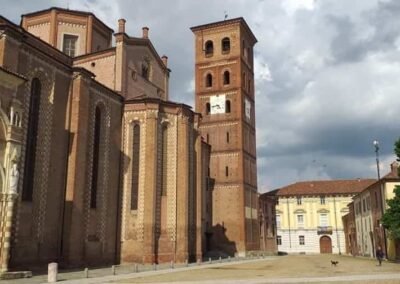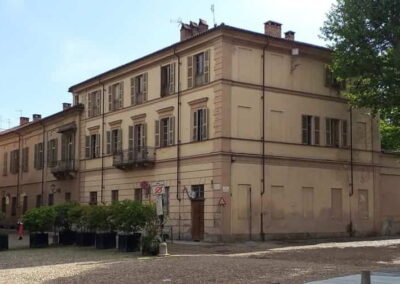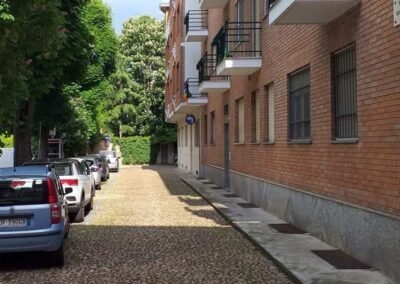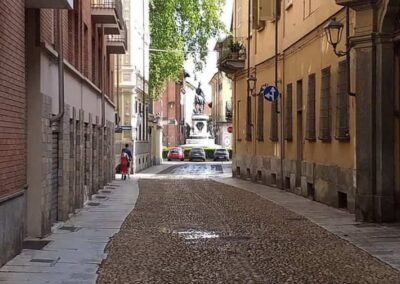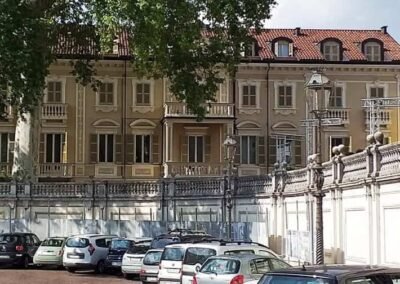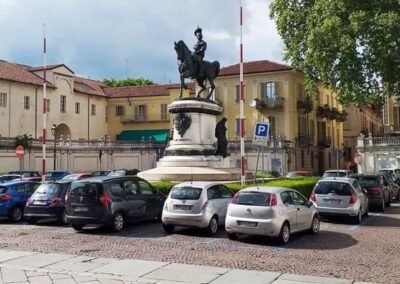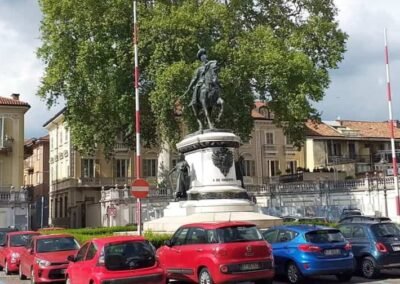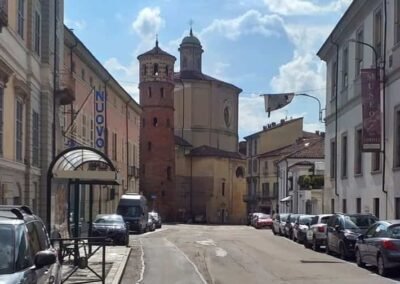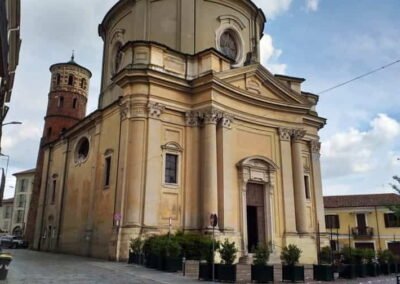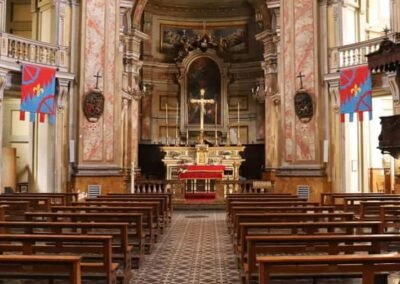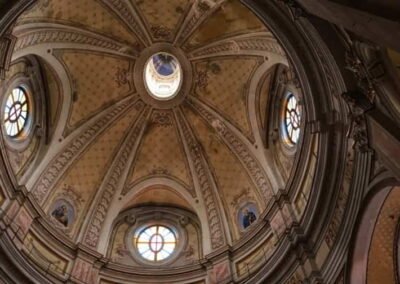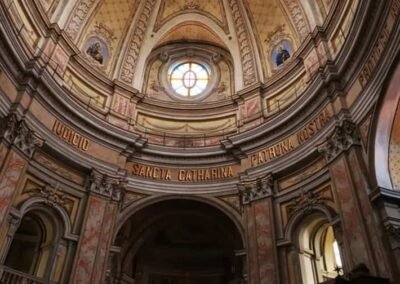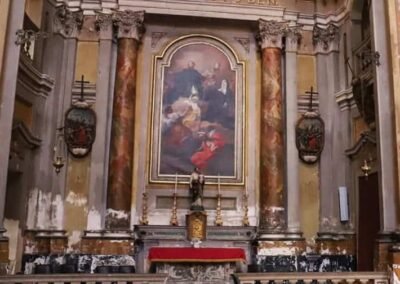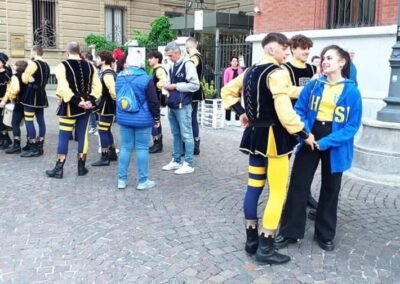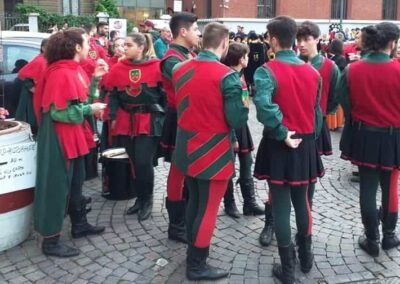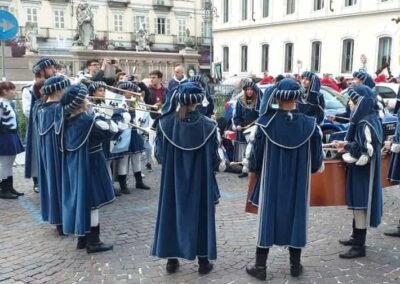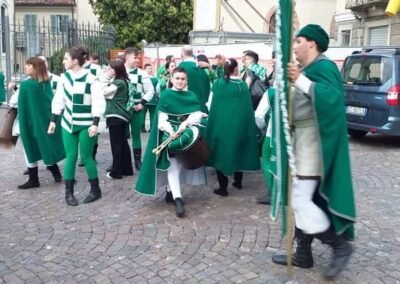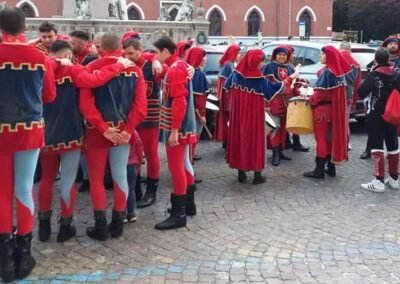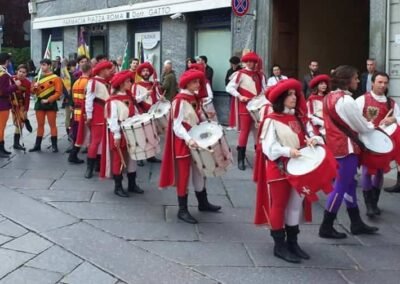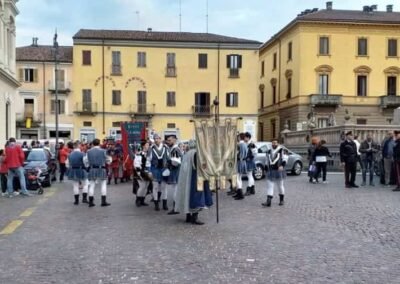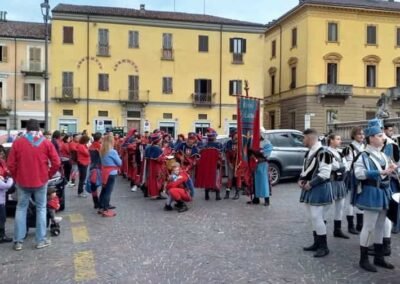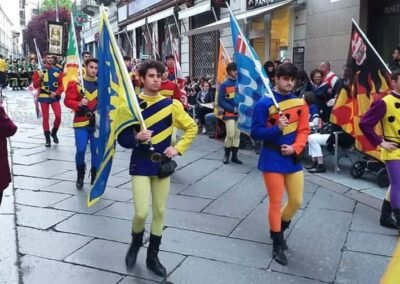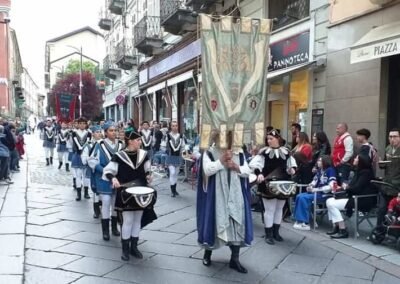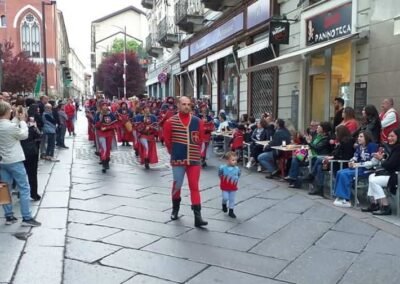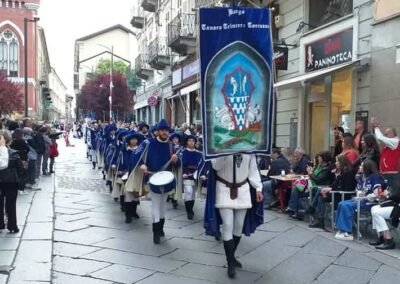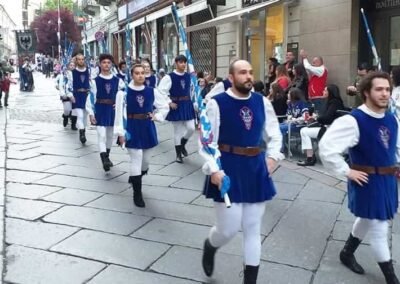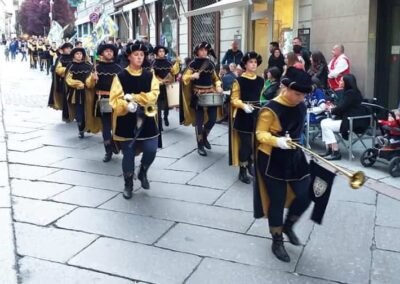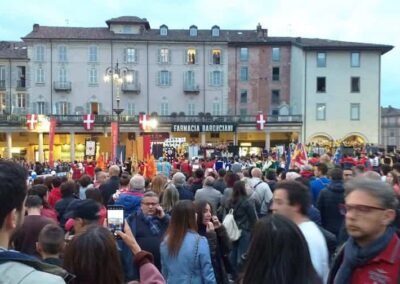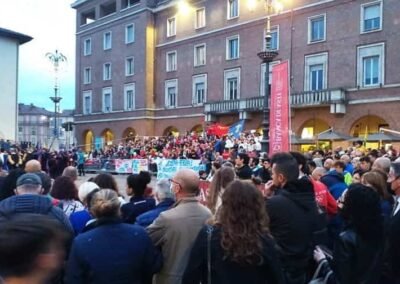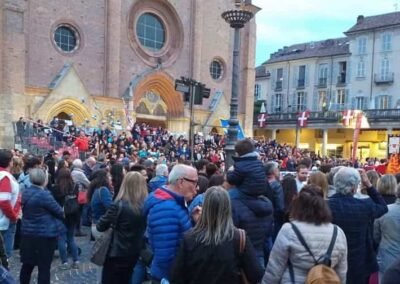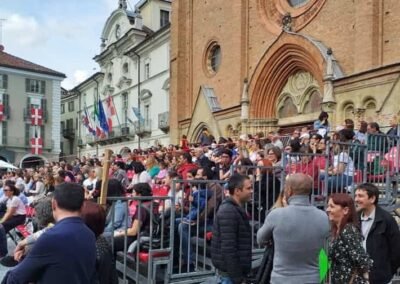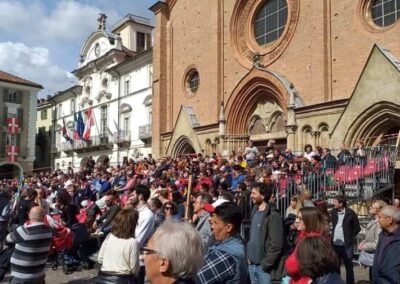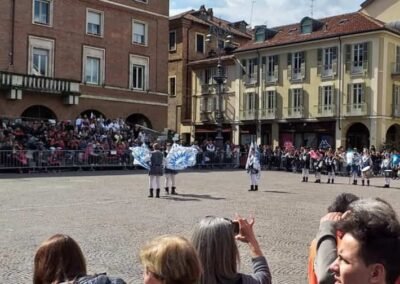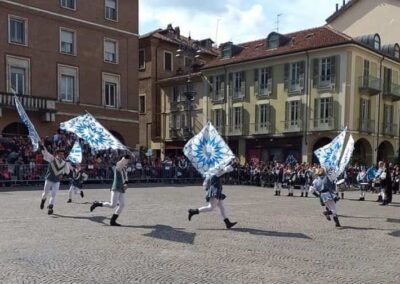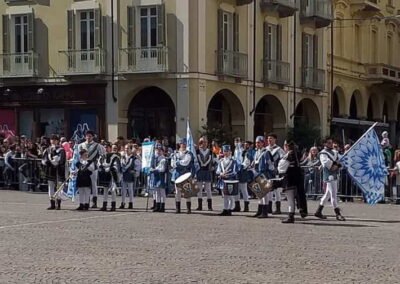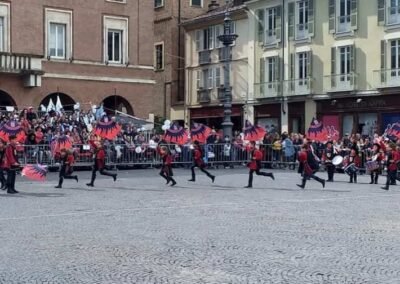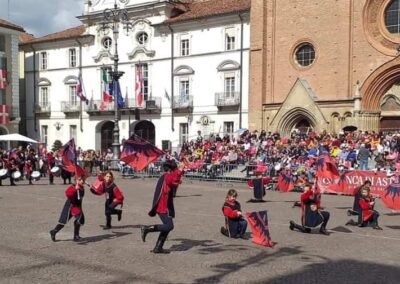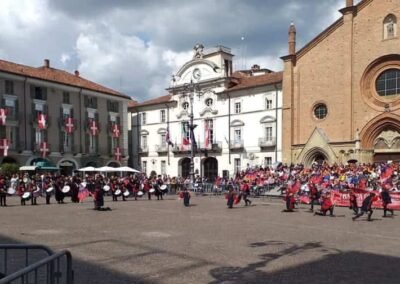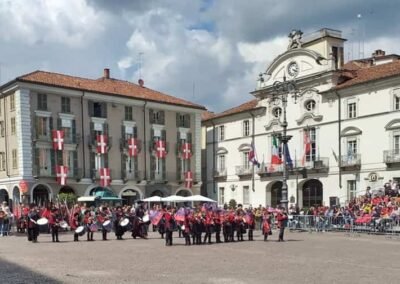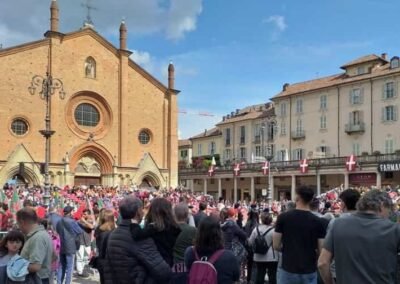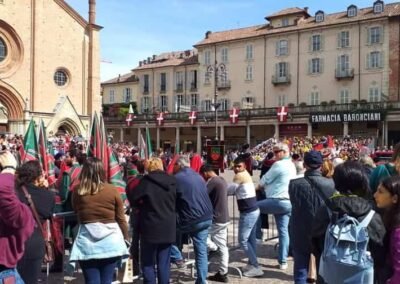HOME
THE REGIONS OF ITALY
PLACES IN ITALY
Italy in Photos
Via C. Benso di Cavour, 14100 Asti AT, Italy (May 2022)
Asti
Asti is a charming city located in the Piedmont region of north-western Italy, celebrated for its rich history, elegant architecture, and world-renowned wines. Nestled in the heart of the rolling hills of Monferrato, a UNESCO World Heritage site, Asti offers visitors a perfect blend of cultural heritage and natural beauty. The city lies about fifty-five kilometres southeast of Turin and serves as an important centre of wine production, particularly famous for Asti Spumante and Moscato d’Asti, two sparkling wines that have brought international recognition to the region.
The origins of Asti date back to Roman times, when it was known as Hasta. Over the centuries, it developed into a prosperous medieval commune and became a significant commercial hub due to its strategic position along trade routes connecting Italy to France and Switzerland. The wealth generated from trade and banking during the Middle Ages allowed Asti’s citizens to build impressive towers, palaces, and churches, many of which still stand today. Walking through the historic centre feels like stepping into the past, with narrow cobblestone streets, brick façades, and Gothic arches that tell the story of a once-powerful city-state.
Asti’s architectural treasures include the Cathedral of Santa Maria Assunta, a magnificent example of Lombard-Gothic style with beautiful frescoes and intricate stonework. Nearby, the Collegiate Church of San Secondo honours the city’s patron saint and serves as the heart of many local festivities. One of the most captivating events in Asti is the Palio di Asti, a traditional horse race held every September in the central Piazza Alfieri. Dating back to the thirteenth century, it is one of the oldest horse races in Italy, combining medieval pageantry, colourful parades, and fierce competition among the city’s districts.
Beyond its historical charm, Asti is also a gateway to the surrounding countryside, known for vineyards, truffle-rich woodlands, and picturesque villages perched on hillsides. The area’s culinary scene reflects the excellence of Piedmontese cuisine, offering dishes such as agnolotti pasta, vitello tonnato, and hazelnut desserts, perfectly paired with local wines. Visitors can explore wine cellars, attend tastings, and enjoy slow-paced tours through the scenic hills, especially during the grape harvest season.
Today, Asti maintains a delicate balance between tradition and modern life. It remains a small yet vibrant city where culture, gastronomy, and history come together in a uniquely Italian atmosphere. Whether one visits for the art, the wine, or the festive spirit, Asti leaves a lasting impression of elegance, warmth, and authenticity.
Worth a Visit
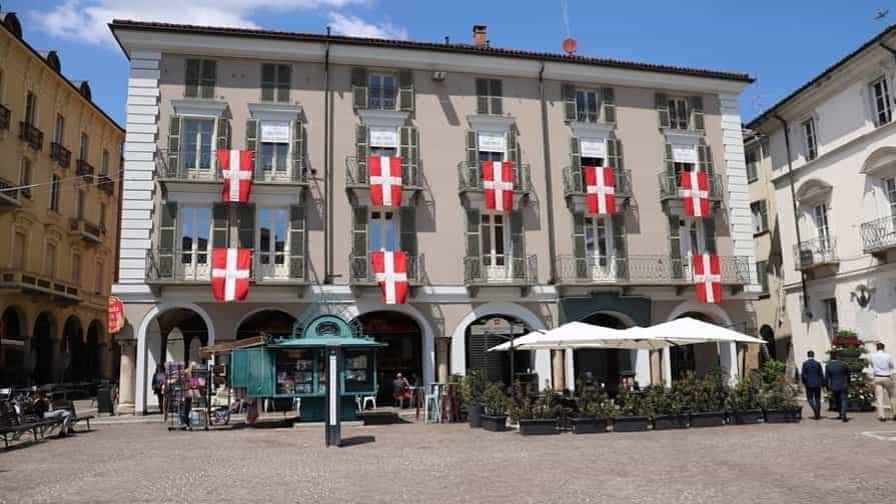
Piazza San Secondo is the historic and cultural heart of the city of Asti, located in the Piedmont region of north-western Italy. Rich in architectural beauty and historical significance, this central square serves as a symbol of the city’s enduring legacy. Named after Saint Secundus (San Secondo), the patron saint of Asti, the piazza is a vibrant meeting point for both locals and visitors, blending medieval charm with modern-day life. At the centre of the square stands the Collegiata di San Secondo, a majestic Romanesque-Gothic church that dates back to the 13th century.
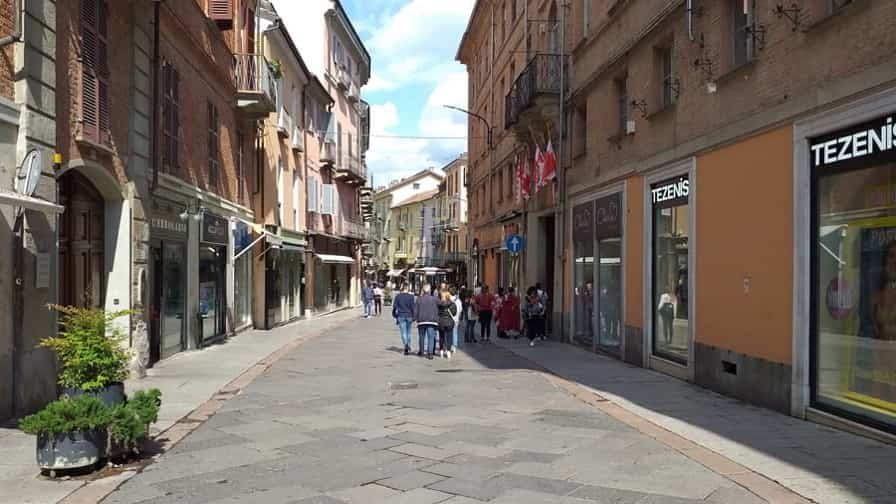
Corso Vittorio Alfieri is the main thoroughfare of the historic city of Asti, located in the picturesque Piedmont region of northern Italy. Named after the renowned 18th-century playwright and poet Vittorio Alfieri, who was born in Asti in 1749, this elegant street serves as both a cultural landmark and a lively centre of daily life. Stretching through the heart of the city, Corso Alfieri is more than just a road, it is a vibrant corridor that connects Asti’s past with its present. This long, gently curving avenue follows the ancient route of the Roman decumanus maximus, the main east-west axis of the original Roman city. As such, it is one of the oldest parts of Asti, and walking along Corso Alfieri means tracing the footsteps of centuries of history.
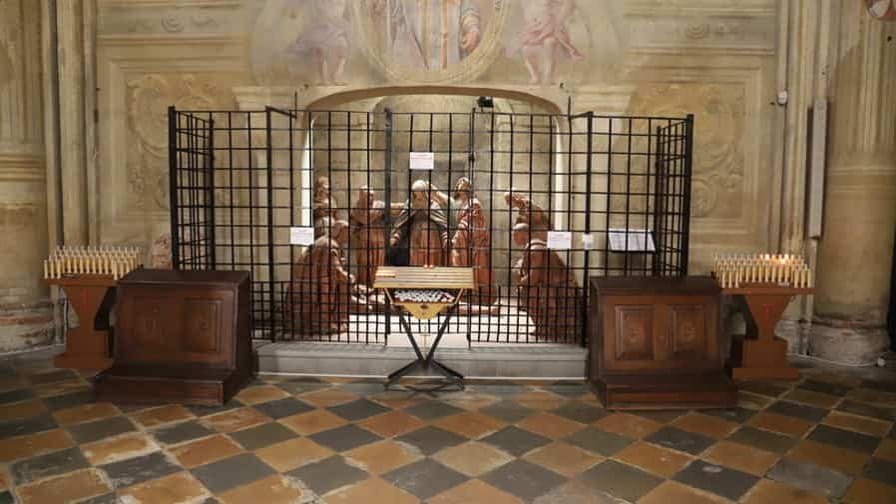
The Cattedrale di Santa Maria Assunta, also known as the Asti Cathedral, is the most important religious building in the city of Asti, located in the Piedmont region of north-western Italy. Towering over the surrounding rooftops, the cathedral is a masterpiece of medieval architecture and a key symbol of Asti’s historical and spiritual identity. Dedicated to the Assumption of the Virgin Mary, it is not only a centre of Catholic worship but also an architectural gem that draws visitors for its beauty, history, and cultural significance. Built between the 13th and 15th centuries, the cathedral stands on the site of earlier churches dating back to the early Christian era.
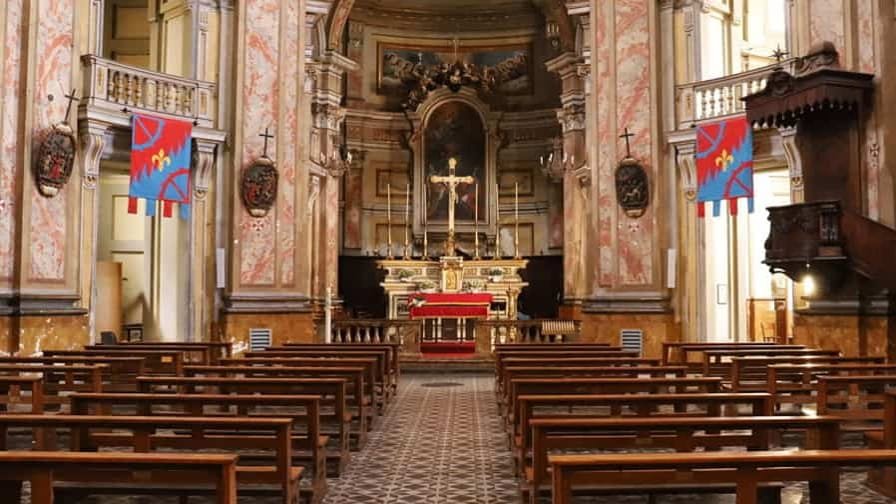
The Chiesa Parrocchiale di Santa Caterina is one of the most graceful and historically significant churches in Asti, Italy. Located in the heart of the city, it stands as a fine example of late Baroque architecture, blending elegance and devotion in perfect harmony. Built in the early eighteenth century, the church is dedicated to Saint Catherine of Alexandria, a figure venerated for her wisdom and faith. Its façade, with curving lines and decorative details, reflects the artistic richness of the period, while the interior captivates visitors with frescoes, gilded stuccoes, and a serene atmosphere ideal for reflection. The main altar, adorned with marble and intricate carvings, forms the spiritual and visual centrepiece of the church. Beyond its artistic beauty, Santa Caterina continues to serve as a vibrant place of worship and community, preserving centuries of Asti’s religious and cultural tradition.
Photo Gallery of Walk 1 – Asti Satazione, Piazza Guglielmo Marconi to Hotel Lis, Via F.lli Rosselli
Approximately 0.82 km – 0.51 miles
The walk starts in Piazza Guglielmo Marconi – Corso Luigi Einaudi – Corso Alla Vittoria – Hotel Lis, Via F.lli Rosselli
Photo Gallery of Walk 2 – Via C. Benso di Cavour to Piazza Vittorio Alfieri
Approximately 0.00 km – 0.00 miles
The walk starts in Via C. Benso di Cavour – Piazzetta S. Paolo – Via C. Benso di Cavour – Piazza Statuto – Piazza S. Secondo – Collegiata di San Secondo, Piazza S. Secondo – Piazza S. Secondo – Piazza Libertà – Piazza Vittorio Alfieri
Photo Gallery of Walk 3 – Piazza S. Secondo to Chiesa Parrocchiale di Santa Caterina
Approximately 1.22 km – 0.76 miles
The walk starts in Piazza S. Secondo – Via Giuseppe Stefano Incisa – Corso Vittorio Alfieri – Piazza Roma – Giardini Alganon, i – Corso Vittorio Alfieri – Via Luigi Goltieri – Via Borgnini – Piazza Cattedrale – Cattedrale di Santa Maria Assunta, Piazza Cattedrale – Piazza Cattedrale – Via Francesco Caracciolo – Piazza Fratelli Cairoli – Corso Vittorio Alfieri – Chiesa Parrocchiale di Santa Caterina, Corso Vittorio Alfieri
The Palio Sbandieratori of Asti
The Palio Sbandieratori of Asti is one of the most vibrant and captivating traditions in northern Italy, celebrated as part of the historic Palio di Asti. Set in the heart of the Piedmont region, this event combines athletic skill, artistry, and centuries of civic pride. The term “sbandieratori” refers to the flag throwers who perform intricate routines with colourful banners representing the different districts, or “rioni,” of the city. Their performances take place in the days leading up to the famous Palio horse race and serve as a vivid expression of Asti’s medieval heritage. The display of precision, rhythm, and teamwork among the flag bearers transforms the city’s squares and streets into a living stage of color, sound, and motion.
The art of flag throwing has ancient roots in Italian history. In medieval times, flags were used as symbols of loyalty, carried into battle or displayed during civic and religious ceremonies. Over time, the practice evolved into a form of performance that celebrated the skill and coordination of those who bore the banners. In Asti, this tradition has been passed down through generations, refined into an elaborate and highly disciplined display that reflects both strength and elegance. Each flag, emblazoned with the unique colours and emblems of its district, tells a story of local identity and pride.
During the Palio Sbandieratori, groups of flag throwers perform choreographed routines to the rhythm of drums and trumpets. The movements are precise and fluid: flags rise and fall in graceful arcs, intertwining mid-air before being caught with perfect timing. The performers’ synchronization is the result of months of training, as each gesture must align seamlessly with the music and the movements of fellow team members. The spectacle is not merely a competition of skill but also an artistic celebration of unity and tradition.
The event brings together citizens and visitors alike, creating an atmosphere of festivity and community. Crowds fill Asti’s historic squares, cheering for their neighbourhoods while admiring the pageantry of costumes, banners, and medieval music. The Palio Sbandieratori captures the essence of Asti’s cultural soul—its devotion to history, its creative spirit, and its enduring sense of pride. More than just a performance, it is a living testament to the artistry and heritage that define this beautiful Italian city.
COPYRIGHT © 2018-2025 ITALY IN PHOTOS - ALL RIGHTS RESERVED

